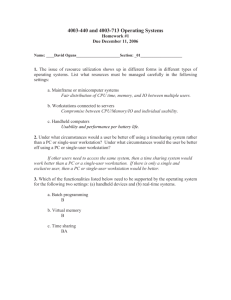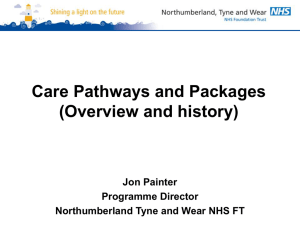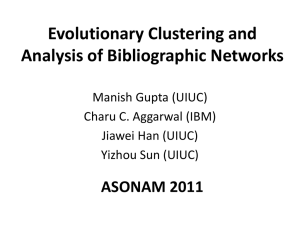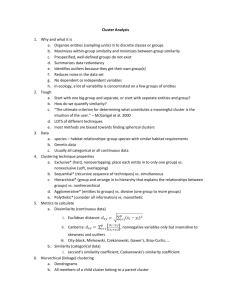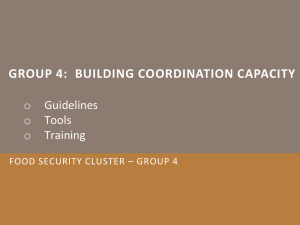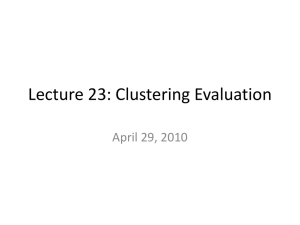- NHS Providers
advertisement
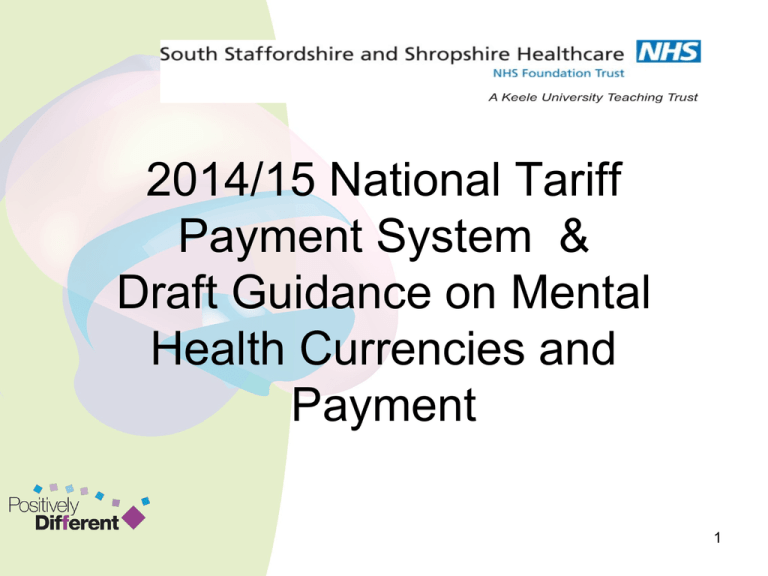
2014/15 National Tariff Payment System & Draft Guidance on Mental Health Currencies and Payment 1 The Challenge for 2014/15 • • • • • • • Increasing Caseload and Casemix awareness Agreeing & Implementing Quality and Outcomes Supporting Care Pathways and Interventions Supporting Engagement with Service Users Develop a robust long term payment mechanism Transactional Simplicity Avoid de-stabilising health economies 2 Monitor Mandatory requirements to be embedded in contracts • Use the 21 Care Clusters as contract currency • Cluster Reviews to be completed within maximum period in the Mental Health Clustering Tool Booklet • MHMDS data based on data from MH Clustering Tool • Option for moving away from block contracts using caseload based approach and thresholds and caps • Quality Outcomes to be agreed for each Cluster 3 Basic Payment Mechanism • Recommend use of Cluster day as the basis for contracting • Local Cluster prices may be analysed by setting e.g. Admitted, Non – admitted and Initial Assessment • Active Service User caseload can be analysed by Cluster and updated on a quarterly basis • Agree any data cleansing methodology of the clinical caseload within the memorandum of understanding • Compliance with Cluster Review Periods for Active Service Users on the caseload – to be used as a Quality Indicator metric 4 Risk Management • Memorandum of understanding based on last year’s model • Before moving to cost and volume approach commissioners must be assured that the thresholds set to manage financial risks reflect ongoing contract developments • The Memorandum of understanding should : - Include methodology for any Data Quality improvement initiative - Cluster information should be used to inform service change not impose service change 5 Quality and Outcomes • Cluster Review Periods should be within the maximum review periods specified in the Clustering Booklet and included in the national contract. • Compliance with the Cluster Review Period should be a Quality Indicator metric. • Suggestions for use of wider quality and outcome metrics linked to – CQUIN incentives (PREM, PROM, Clinical indicators) 6 Right Balance • The underpinning currency has been simplified • We MUST ensure there is real emphasis given to the Quality and Outcomes agenda. • Need incentives and penalties • CQUINs a tool to support this • A focus for local agreement 7 Right Pace • Incentives and penalties need to be used cautiously • we don’t yet know what good is for a lot of things • Improvement trajectories may be more helpful than absolute performance in the first instance • MHMDS information will be available via HSCIC • National standards, requirements and expectations will then be possible in subsequent years 8 Right Content • 10 Data Quality Indicator metrics available via MHMDS that give an insight into an organisation’s performance around clustering. • An additional 8 Data Quality Indicator metrics available for potential local / national use • Local agreement must be reached on which metrics to focus on. • These should be jointly reviewed each quarter. 9 Next stages for national development • Set out longer term direction of travel – Days /Periods • Key issues to resolve – Developing and using the outcome metrics in contracting – Deeper understanding of impact of variation in provider landscape – Initial Assessment – Fit with wider integration agenda 10 Where are We Now? • We now have better information than we have ever had • Transparency in the system challenges us to change • The focus has to be on outcomes - this is our main challenge going forward • Providers and Commissioners jointly need to take hold of the information agenda • Jointly managing risk is critical • We must understand and be assured of underlying data before using it for change • Opportunities for innovation and seizing the agenda 11

